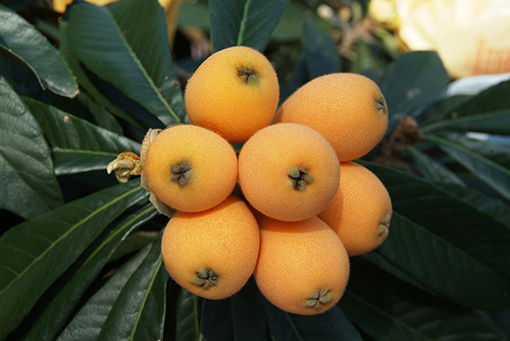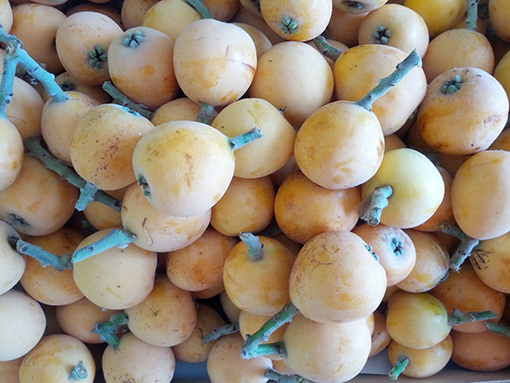This month in our blog series we would like to introduce you to the níspero, in English the loquat, a fruit which you have probably never heard of but which you should definitely get to know while you are here in Mallorca.
It looks like a yellow plum, has the size of a ripe fig and its taste is reminiscent of apricot and peach. Most people come across this fruit for the first time in Spain – the níspero, whose correct name is “Japanese Loquat” or sometimes just simply called “Loquat” or “Mispero”. The loquat is a species of the genus of the kernobutaceae in the family of the rosaceae, and therefore does not belong to the genus of the medlar as it is often assumed.
Spain is one of its most important producers

Loquats are rather inconspicuous – the small, round, yellow-orange fruits with relatively hard skin hang in clusters under slightly hairy, large green leaves on an evergreen tree which is often found in Majorcan gardens. Once picked, the fruit quickly gets brown spots which by no means affect the taste but mean that it is difficult to keep it fresh for long periods, making its export more difficult. This is the reason why it is seldom found in western European supermarkets. Its harvesting time is from the end of April until the middle of June. Spain is the second largest producer after China, from where the fruit originated before it reached southern Japan about 1,000 years ago and Europe during the 18th century. The largest cultivation areas in Spain are on the east coast of the Mediterranean, particularly Costa Blanca.
The sweet fruit is considered very healthy
The loquat only tastes good when it is really ripe, and only then the fruit develops its sweetish aroma. Unripe it has a sour taste and causes a “furry” feeling in the mouth. Many people prefer to peel the fruit, but in principle the peel can be eaten.

The little fruit, however, has its secrets – the loquat has not only one, but often several shiny dark pips, always at least 2 and up to 5 which are found together in the middle of the fruit. So be careful when taking a bite! At the same time, the loquat is considered to be extremely healthy as it contains a lot of vitamin C and also being rich in vitamin A and potassium. It is also said to have blood and kidney-cleansing and cholesterol-lowering properties. It is easily digestible and recommended because of its high pectin content for cardiovascular disorders, and tea made from Níspero leaves is said to help with a sore throat. Even the pips can be used, and roasted they can be a relatively good coffee substitute.
The Majorcans make jam and marmelade from the fruit and it also tastes good in a fruit salad or on cakes. Now and again it is also used for sauces, for example with pork as the Majorcans love a sweet touch with savoury dishes, this is probably a legacy from the time of the Arab occupation.
So, if you encounter mountains of the fruit in a Majorcan market, do not hesitate to buy some. The fruit is cheap and healthy, a simple and typical island speciality.


Níspero ice cream

This delicious summer recipe is from our property manager Judith. It can be prepared quickly, has only 4 ingredients and is perfect as a refreshment on a holiday evening.
Ingredients
500 g of fresh loquats
320 ml of milk
170 g of sugar
2 egg yolks
Preparation
Blanch the loquats and peel off the skin, then halve the fruits and remove the seeds and inner skin.

Boil the milk with 100g of sugar and let it cool.
Mix the sugar with 60 ml of warm water and bring to the boil. Simmer the loquats on medium heat for a few minutes then strain them. Put 8 halves aside and use them later as a garnish. Puree the remaining fruit and allow to cool.
Now mix the milk/sugar mixture, the 2 egg yolks and the fruit puree together. If you have an ice machine the mixture can now be put in and slowly left to freeze, but it could also be divided into 4 portions and then frozen.
We hope you enjoy it!
